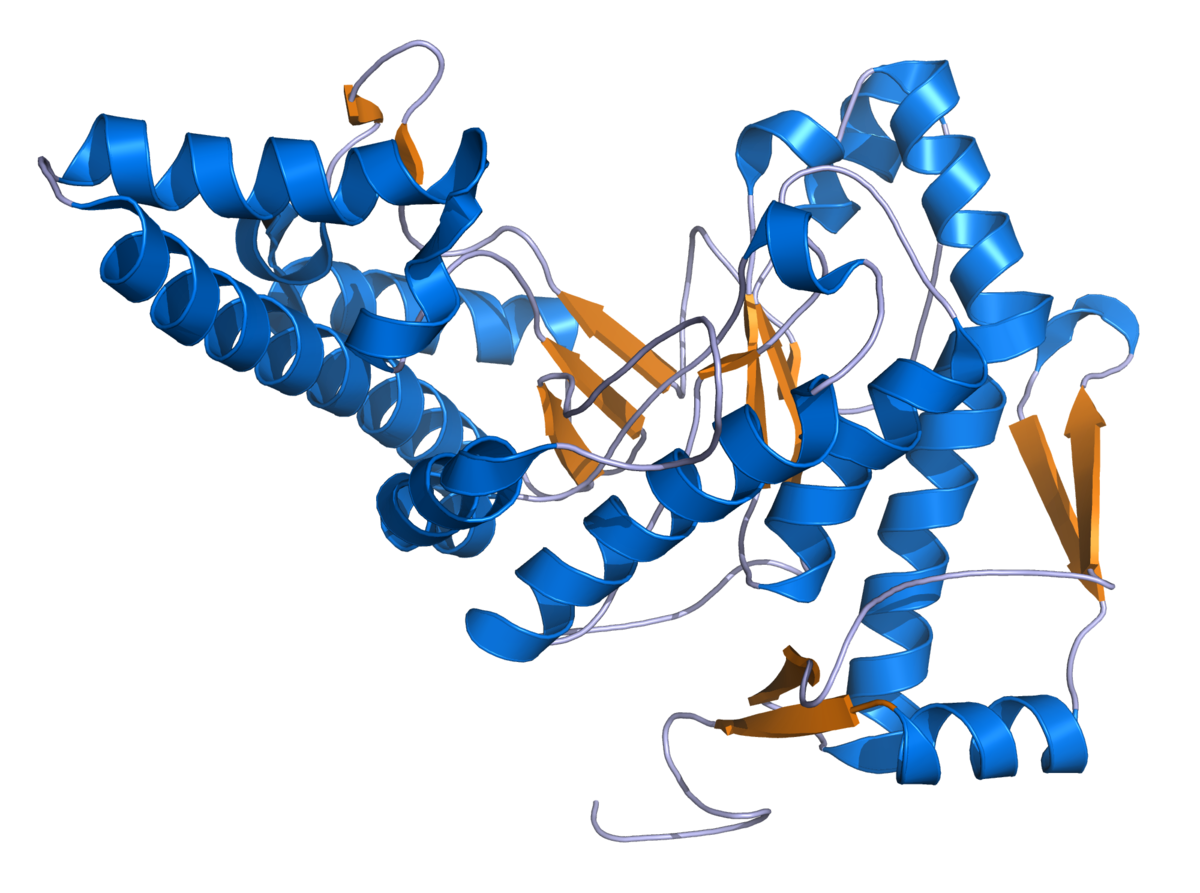

These genes, HYAL1 and HYAL2 (603551), encode 2 distinct lysosomal hyaluronidases with different substrate specificities. (1999) analyzed 2 candidate genes tandemly distributed on 3p21.3 that encode proteins with homology to a sperm protein with hyaluronidase activity.

To determine the molecular basis of hyaluronidase deficiency, or MPS IX, Triggs-Raine et al. Studies of 2 human small-cell lung carcinoma (182280) cell lines containing homozygous deletions of the LUCA1 (lung cancer-1) gene suggested that HYAL1 and LUCA1 may be identical. It encodes a predicted 462-amino acid protein that is 73% identical to human HYAL1. (1998) cloned a cDNA encoding the mouse homolog of HYAL1. (1997) stated that HYAL1 is likely the deficient hyaluronidase in the patient with hyaluronidase deficiency (601492) described by Natowicz et al. Screening of cDNA libraries by PCR indicated that HYAL1 is expressed in multiple tissues, but not in brain. Cells transfected with the HYAL1 cDNA secreted hyaluronidase activity that was biochemically indistinguishable from plasma hyaluronidase. The predicted 435-amino acid protein is 40% identical to the sperm-specific hyaluronidase SPAM1 (600930). Using the partial sequence of the purified protein to search a human expressed sequence tag (EST) database, they identified a cDNA encoding HYAL1. (1997) purified the major hyaluronidase in human plasma, hyaluronoglucosaminidase-1 (HYAL1). Serum hyaluronidase activity was not detectable in patients compared to controls and the carrier parents.įrost et al. The mutation was found by homozygosity mapping, which identified a shared 40.52-Mb homozygous region at chromosome 3p22.3-p13, followed by Sanger sequencing of the 3 hyaluronidase genes in this region, HYAL1, HYAL2, and HYA元 ( 604038). (2011) identified a homozygous frameshift mutation in the HYA元 gene ( 607071.0003). In 3 sibs, born to consanguineous Middle Eastern parents, with MPS9 Imundo et al. The findings in relation to these 3 genes explained the unexpectedly mild phenotype of MPS IX and predicted the existence of other hyaluronidase deficiency disorders. They showed that these 2 hyaluronidase genes, as well as the adjacent HYA元 gene ( 604038), had markedly different tissue expression patterns, consistent with differing roles in the metabolism of hyaluronan. (1996) was a compound heterozygote for 2 mutations in the HYAL1 gene: a 1412G-A mutation that introduced a nonconservative amino acid substitution (glu268 to lys 607071.0001) in a putative active site residue, and a complex intragenic rearrangement, 1361del37ins14 ( 607071.0002), that resulted in a premature termination codon. They found that the patient with hyaluronidase deficiency originally reported by Natowicz et al. These genes, HYAL1 and HYAL2 ( 603551), encode 2 distinct lysosomal hyaluronidases with different substrate specificities. Lerman and Minna (2000) suggested that HYAL1 is a candidate for functional tumor suppressor gene studies and promoter methylation studies. Mutations were found in approximately 5% of cell lines tested. HYAL1 was not expressed in lung cancer cell lines. Expression was low in lung and skeletal muscle, and trace amounts were detected in pancreas.

Using Northern blot analysis, Lerman and Minna (2000) detected wide expression of a 2.6-kb HYAL1 transcript that was highest in liver and kidney, followed by heart. Studies of 2 human small-cell lung carcinoma ( 182280) cell lines containing homozygous deletions of the LUCA1 (lung cancer-1) gene suggested that HYAL1 and LUCA1 may be identical. (1997) stated that HYAL1 is likely the deficient hyaluronidase in the patient with hyaluronidase deficiency ( 601492) described by Natowicz et al. The predicted 435-amino acid protein is 40% identical to the sperm-specific hyaluronidase SPAM1 ( 600930).


 0 kommentar(er)
0 kommentar(er)
